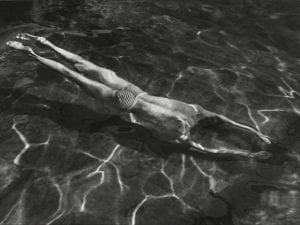Tina Modotti (1896-1942) was an esteemed photojournalist dedicated to political activism. Born in Italy, she immigrated to the USA in 1913 and, in 1923, moved to Mexico along with her professional and personal parter Edward Weston (1886-1958). She grew to love the country, picturing its communities with sensitivity. Now, 100 years later, Foam, Amsterdam, brings together 250 vintage examples of her remarkable work alongside contextual pieces from others in her close circle – including Weston. It’s an impressive survey, showcasing Modotti’s skill and reinstating her as key to the history of lens-based art.

Modotti took snapshots of the people she met, paying particular attention to Indigenous customs and the experiences of women. One example is the eye-catching portrait, Woman of Tehuantepec (carrying jicalpextle) (1929). Jicalpextle are large bowls made from pumpkin and painted with colourful botanical designs. As the image shows, women typically balance them on their heads to hold vegetables and fruits. These vessels also hold symbolic significance during religious events and celebrations, such as weddings. Modotti’s admiration for these women and their labour is clear; she features them as subjects many times, collaborating on multiple occasions to tell their stories. As Art Historian Patricia Albers (b. 1943), who wrote a biography about the image-maker in 1999, told The Guardian: “There is a complicity with her subjects because she is working with them and you sense that rapport.” It’s a strikingly contemporary approach to documentary that involves communication and understanding – both from subject and photographer.

Modotti also sought to raise class-consciousness through her photojournalism. Her connection to revolutionary ideals pushed her to the forefront of social change and she officially joined the Mexican Communist Party in 1927. In this regard, MoMA curator Eva Respini (b. 1976) presents us with one of the artist’s iconic pieces, Worker’s Parade (1926). It shows a large crowd of men participating in the annual May Day demonstration. We only see the people from the back, so it looks like a sea of white sombreros at a quick glance. Respini explains that it’s an example of Modotti’s ability to “combine a modernist aesthetic with her political motivations and her beliefs.” Their hats show that they are farm labourers: Campesinos and Trabajadores. Modotti often used the camera to advocate for their rights post-Mexican Revolution (1910-1920). She frequently featured in the Communist party newspaper, El Machete, but also depicting working class people reading it. In El Machete (1927), the periodical takes up the centre of the composition. Taken from above, we once again see mostly sombreros and catch glimpses of the men beneath them. Another portrait, Peasant Reading El Machete, Newspaper of the Communist Party (1927), is more personal as we focus in on one reader. He pores intently over the article and completely disregards the camera.

After Modotti’s death in 1942, many of her pieces were lost and her legacy risked being forgotten. In 1973, photographer Riccardo Toffoletti found and displayed 30 prints in Udine, Italy – her birthplace. MoMA also dedicated a small installation to her five years later. This was followed by the influential 1983 exhibition curated by film theorists Laura Mulvey and Peter Wollen, held in Whitechapel Gallery, London. It showed her images alongside paintings by Frida Kahlo as well as the documentary, Frida Kahlo and Tina Modotti (1983). Her own skill as an artist and activist, as with many women artists of the 20th century, is often overshadowed by her relationship with male contemporaries, like Weston and Diego Riviera. Foam’s show, however, acknowledges her place in art history. It is the third in the gallery’s new series dedicated to untold stories by unseen icons and follows on from Ernest Cole and Ara Güler earlier this year. Recent research has found that Weston and Modotti’s work has often been very difficult to distinguish from one another; some of her famous pictures have been wrongly assigned to Weston. Foam celebrates Tina Modotti as an artist in her own right, highlighting the deeper significance and impact of her bold body of work.
Foam, Amsterdam: Tina Modotti – Artist and Activist | Until 31 January
Words: Diana Bestwish Tetteh
Image Credits:
- Men reading “El Machete.”, (c. 1927), photo by Tina Modotti / Colección y Archivo de Fundación Televisa, Ciudad de México.
- Untitled, (Indians carrying loads of corn husks for the making of “tamales’) (1926-1929), photo by Tina Modotti / San Francisco Museum of Modern Art. Donations from Art Supporting Foundation, John ≪ Launny ≫ Steffens, Sandra Lloyd, Shawn and Brook Byers, Mr. and Mrs. George F. Jewett, Jr., and anonymous donors.
- Canana, sickle and guitar, (1927), photo by Tina Modotti / Colección y Archivo de Fundación Televisa, Ciudad de México.
- Man with log, (1928), photo by Tina Modotti / Colección y Archivo de Fundación Televisa, Ciudad de México.





